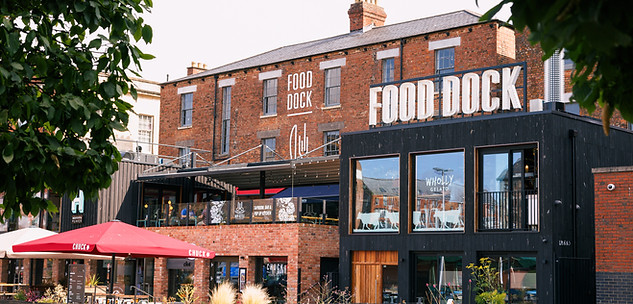HISTORY
OF GLOUCESTER

Roman Gloucester
Gloucester owes its name, strategic location and much of its layout to many centuries of Roman occupation. The first settlement was a military fortress at Kingsholm established in the late 40s or early 50s AD. It developed into one of the chief settlements in Roman Britain, and was granted the title of Colonia Nervia Glevensis by Emperor Nerva – the highest status a provincial town could achieve in the Roman Empire.
Anglo Saxon Gloucester
After the Fall of Rome, Gloucester was captured by the Anglo-Saxons following the decisive battle Dyrham in 577. The Mercian king, Osric of Hwicce, founded an abbey dedicated to St Peter on the site of today’s Cathedral. By the tenth century, Gloucester continued to be an important centre in the Kingdom of Mercia, and was famously re-planned and re-fortified by Queen Aethelflaed (daughter of Alfred the Great) as a defense against the marauding Danes. The core street layout survives to this day. Aethelflaed also founded the New Minster church of St Oswald (c 900 AD) which became a shrine of great importance following the installation the seventh century king and saint’s bones.
The Middle Ages
During the reign of Edward the Confessor, Gloucester was one of the three most important cities in England (the others were London and Winchester), with the king meeting the Great Council here on an annual basis. Following the Norman Conquest of 1066, William I continued to hold meetings in Gloucester, and on one such occasion in 1085, commissioned the most comprehensive survey of his new kingdom, the Domesday Book.
Gloucester continued to prosper under the patronage of the Plantagenet kings, a nine year old Henry III was even crowned at the St Peter’s Abbey in 1216 – the only time the coronation of an English monarch has taken place outside of Westminster. Henry was deeply religious and granted the use of oak trees from the Royal Forest of Dean to build Blackfriars and Greyfriars. Medieval Gloucester’s fortunes blossomed even more when Abbot Thokey accepted the body of King Edward II to be buried at St Peter’s Abbey in 1327, attracting pilgrims and great wealth to the city. The proceeds were spent on expanding and beautifying the church, and by 1470 it started to resemble the Cathedral which we see today.
The Tudors & The Stuarts
By the Tudor and Stuart periods, Gloucester had already been incorporated by Richard III, with Elizabeth I and James I following his lead. During the reign of Bloody Queen Mary, John Hooper, the city’s protestant bishop was martyred in front of the Cathedral in 1555. Good Queen Bess was kinder and granted the city port status (easily the most inland in the country) and opened up trade links with the rest of the world. During the English Civil War in 1643, Gloucester’s parliamentarians were besieged by overwhelming royalist forces, who outnumbered them twenty to one. The siege was eventually lifted after 26 days on 5 September – now celebrated annually as Gloucester Day.
The Industrial Revolution
During the eighteenth century, Gloucester developed into an industrial centre thanks to nearby deposits of iron ore, coal and timber from the Forest of Dean. The city was famed for its pin manufacturing and bell founding. The century also saw many social reforms which had their origin in Gloucester.The foundation of the Sunday School movement was started by the editor of the Gloucester Journal, Robert Raikes. Sir George Onesiphorus Paul raised concerns that led to nationwide prison reform starting with Gloucester Gaol – the most advanced of its time. The influential George Whitefield began his ministry in the city before exporting his fiery brand of evangelism to the American colonies.
The Victorian era saw the completion of the Gloucester-Sharpness Canal which brought further growth to the timber industry and opened up the city to Scandinavia. As the port grew with dry docks and larger warehouses being established, the city’s prosperity was further enhanced by the development of the railways as the population grew six-fold and many civic building projects were established.
Twentieth Century
Gloucester’s industry continued to expand into the twentieth century adding aircraft production (including the first allied jet, the Gloster E28 designed by the legendary Frank Whittle), railway rolling stock, motorbikes and the manufacture of matches. Though some of these industries are no longer with us, such a rich heritage has given Gloucester to the confidence to look forward. Today, Gloucester is undergoing something of a modern day renaissance, rediscovering and celebrating its rich history. The regeneration of the docks, the King’s Quarter, the Greater Blackfirars area and other once-neglected areas of the city has brought in significant investment that shows no sign of abating. The city continues to serve up an increasingly inspiring array of visitor attractions, festivals, shopping, sport and entertainment on offer to meet the needs of a 21st century audience. Gloucester is built on historic foundations, but is marching forward in style.
